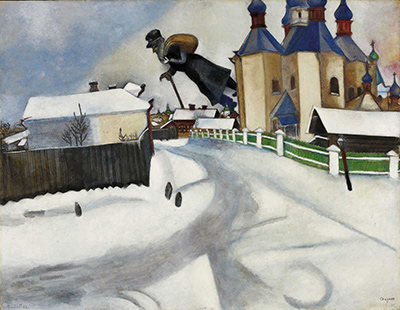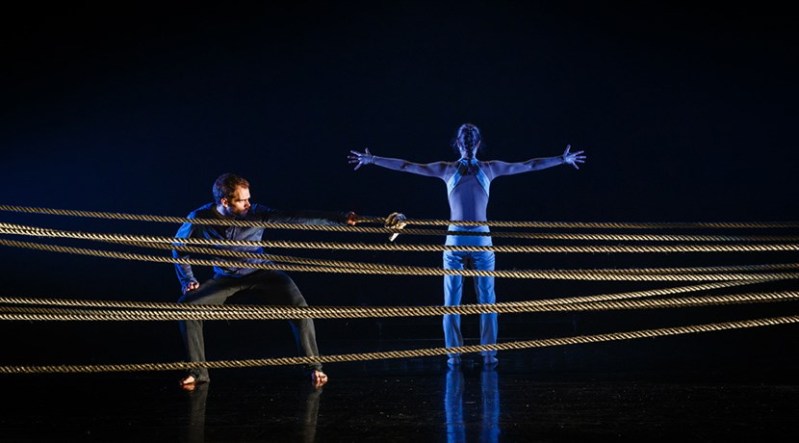contributed by Harriett Stothard, LANS Year 2 student
I went in to this play completely blind (and slightly late – oops!), aside from this very short description I skim-read:
‘Frustrated playwright Amédée (played by Trevor Fox) is still trying to finish the play he started writing . . . 15 years ago! Meanwhile, his wife Madeleine (Josie Lawrence), works hard in telecommunications to keep them in their dilapidated London apartment. But the couple are keeping a secret. A big secret that seems to be getting bigger by the day. A terrifying secret that is now threatening to take over their lives. A secret that has grown into an unwelcome entity they can no longer hide. Now they urgently need a plan of how to get rid of it!’

The wordy trailer….
I assumed that it would be a kitchen-sink comedy drama type thing, which I thought would be interesting if a little dry, but I was so wrong! Turns out, Amédée is a little known Theatre of the Absurd play from 1954, from one of the first voices in Absurdist theatre, Eugène Ionesco, who was in the forefront of this movement along with Samuel Beckett. It has been adapted by Sean Foley and produced by Roxanna Silbert, the Artistic Director of the REP (with this trailer).
It did have elements of the domestic/kitchen sink/sitcom drama style with a bickering couple, except with a mysterious growing… thing in the next room and mushrooms sprouting through the walls! One would be mistaken (as I was) for thinking at the beginning that the growing thing could be their child and that the play was reflecting the common parental anxiety of children growing up and flying the nest, as Madeleine had a sense of the maternal about her, but it ended up being a growing dead body that she accuses Amédée of killing because it was her young lover. This is never really agreed upon amongst all the weirdness in the play, for example Madeleine’s job as a switchboard operator in their apartment, fielding calls for and from various heads of state and often answering nonsensically, Amédée’s vision of himself and Madeleine when they were younger, and the absolutely mad ending, which I won’t spoil in case anyone who hasn’t seen it wants to!
It is very confusing to pick up on different themes from this play as I am no expert in the Theatre of the Absurd, but I found it interesting to witness the (non-physical) transformation of the body in the other room from unwelcome, mysterious house guest, to child, to feared, semi ridiculous growing body, to ex-lover, to Jesus/God (from the layout of his body on stage) to finally, and most bizarrely, a sail!
I mustn’t forget to mention the kind of police state they seem to live in, with Madeleine informing someone over the phone about it, although without having been outside in 15 years, and Alfred Hickling interprets it as an allegory to the emergence of far right politics at the moment.
All in all, it was a fantastic play to see, even if I left feeling not a little flabbergasted and confused, but it was an enjoyable and very intriguing experience, which I recommend to anyone if they get a chance to see it. Lucy and I talked about it all the way home!

Diana Spencer‘s input:
I find the challenges of absurdist theatre refreshing as well as provocative. Living within a context where norms and values seem to shift daily, and within which the ability of anyone to say ‘I belong’ with any sense of confidence has diminished, the worlds of Beckett and Ionescu become increasingly relevant. Like a number of the LANS group, I had been guided by the blurb into expecting something like Look Back in Anger (and was a little bit ambivalent about how such an adaptation would work). Perhaps a better way to my mind of characterising what we experienced was Joe Orton crossed with Monty Python, with a dash of Antonin Artaud.
The play left us processing the challenges of variant and fragile versions of ‘reality’, and it prodded us to examine what constitutes a sense of self and how this reacts to but also models the various modes of existence available to us. We wondered, discussing the play afterwards, whether the growing corpse was symbolic of the ego and its destructive potential. We also wondered to what extent the incomplete play (and the incomplete/dynamic corpse) signalled a wider challenge to the idea of iterative self-fashioning as a way of coming to terms with the daily grind of life. Is it ‘better’ or ‘worse’ to acquiesce to these patterns and normalise them? Or should we seek to ‘resolve’ the irregularities and the mundane experiences that frame them by stepping outside?
I think we all marvelled at the play and the ideas it generated; it’s not necessarily a play to like but it is a play to come back to, and kept creeping into my thoughts all weekend.
And another, shorter, comment: I went along with no idea what to expect and left with just as many thoughts flying around my head! Absolutely bonkers, but also hilarious and thought provoking. – Lucy Fellows, Y2

 rtrayed through a remarkable flow of capoeira, martial arts and stunningly athletic dance. The result is hard to put into words. The stark lighting, making use of black and white, with rare flashes of yellow, the arresting artistry and deft expression of the dancers, accompanied by a moving electro-rock soundtrack by the Polish prog band
rtrayed through a remarkable flow of capoeira, martial arts and stunningly athletic dance. The result is hard to put into words. The stark lighting, making use of black and white, with rare flashes of yellow, the arresting artistry and deft expression of the dancers, accompanied by a moving electro-rock soundtrack by the Polish prog band  Every dancer was perfectly poised, panther-like in their bounce and stealth, radiating strength and artistry in a way that I could never have expected when I settled into my seat that evening. The performance was creative and innovative in every aspect. There were times when they were all linked together and sailed over and under one another in a way that did not seem possible, even as they proved me wrong. The James Wilton Dance company gave us something unique, something startling, something powerful.
Every dancer was perfectly poised, panther-like in their bounce and stealth, radiating strength and artistry in a way that I could never have expected when I settled into my seat that evening. The performance was creative and innovative in every aspect. There were times when they were all linked together and sailed over and under one another in a way that did not seem possible, even as they proved me wrong. The James Wilton Dance company gave us something unique, something startling, something powerful.